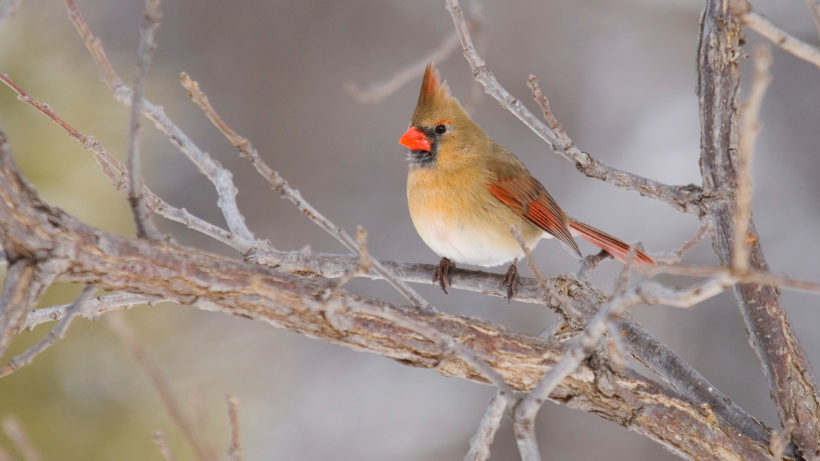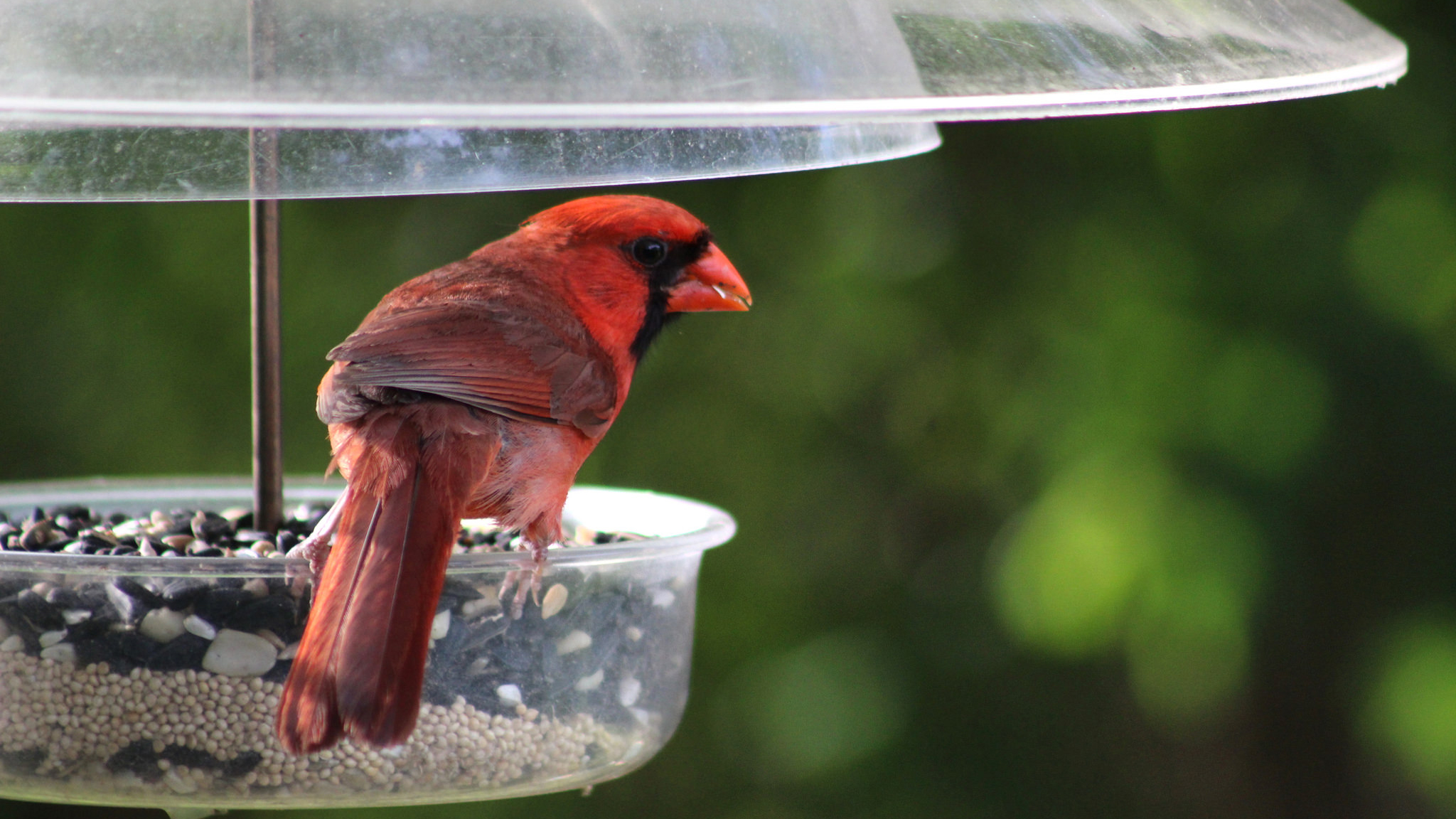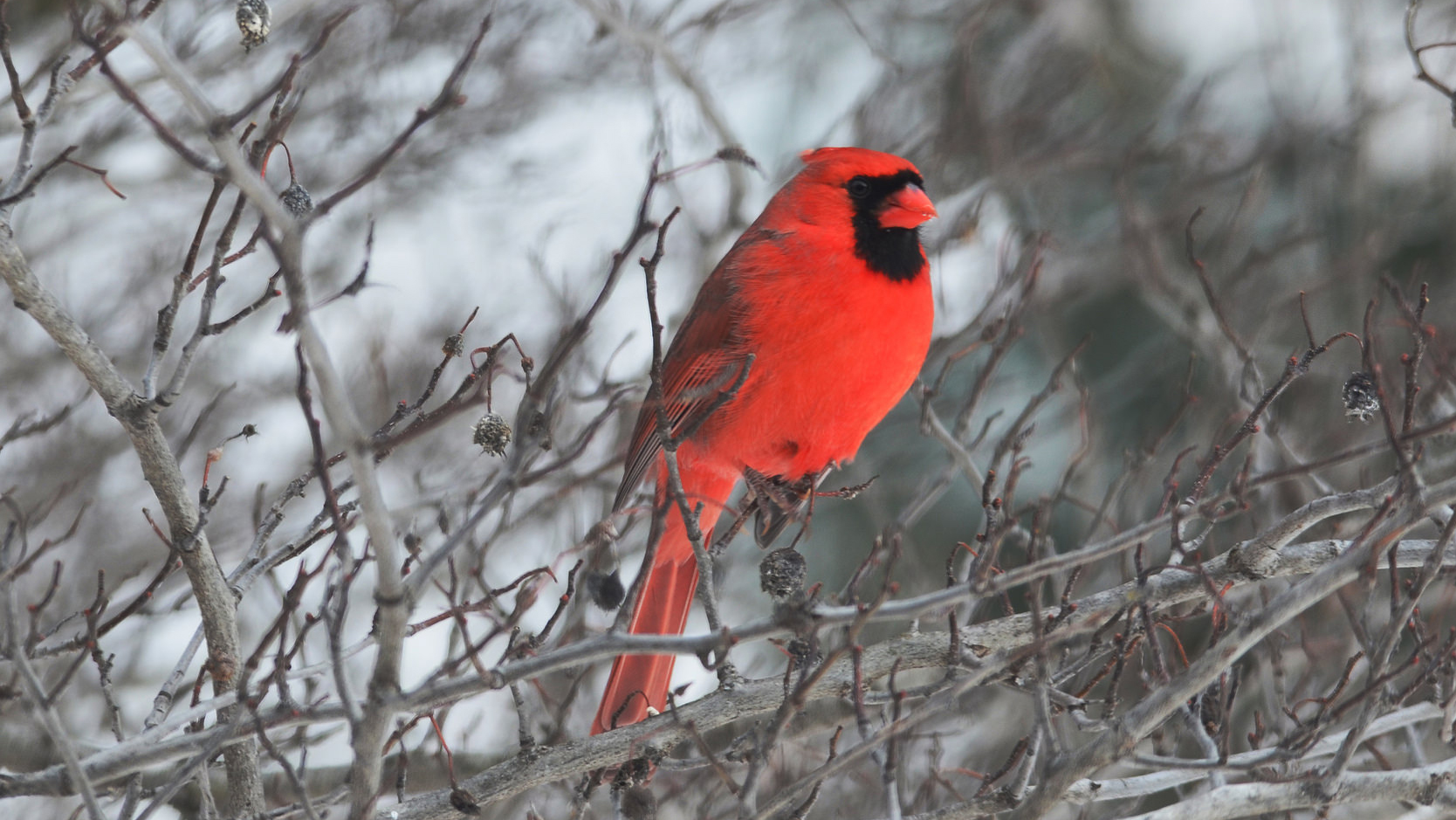The northern cardinal is one of the most recognized and beloved birds in North America – and more people can see them now than ever, as their range has expanded steadily north over the past 100 years.
The splash of red of a male cardinal against snow or an evergreen tree is one of those everyday wonders that delights even people who aren’t into birds. The northern cardinal is one of the few backyard birds deemed worthy of sports mascot status. It is the state bird of seven states. It is featured on everything from holiday cards to expensive paintings.
Many male birds develop bright, gaudy plumage during the breeding season, but moult those showy feathers for duller colors at other times of the year. Not the cardinal. While research has shown that brighter-red males have higher breeding success, and secure prime nesting locations in dense bushes, the cardinal is red even when moulting. (Females are a much more subdued pale brown, although they do exhibit reddish highlights).
The northern cardinal’s spread north has been documented for decades. A 1960 report noted that cardinals first nested in southern Connecticut around 1943, and in eastern Massachusetts in 1958. It also noted that the bird became firmly established in parts of New York, and that its populations increased in northeast Pennsylvania and New Jersey.
The northern cardinal has continued its spread. Over the past 30 years, it has become a resident bird in Northern Minnesota, Maine and southern Canada. This spread has been well-documented thanks to Project FeederWatch, a citizen science program of the Cornell Lab of Ornithology.
Project FeederWatch participants began recording backyard birds in 1987; today, more than 20,000 citizen scientists participate. The program has helped document numerous trends for bird species, including the spread of the cardinal.

Why has the northern cardinal been so successful?
A common idea is that it has spread north due to climate change. Certainly milder winters have aided some species that have trouble thriving in cold weather (like Carolina wrens). And heavy snows could make it more difficult for cardinals to forage for seeds.
But, in this case, the more likely answer is related to habitat and food. Anywhere in the northern cardinal’s range – from eastern forests to Arizona desert scrub – you will most likely encounter them on habitat edges. In Pennsylvania, I could count on seeing them wherever a woodlot bordered a field.
The 1960 report noted that cardinals increased when southern New England farms were abandoned, creating wild fields and young forest. Similarly, suburbia creates a lot of edge habitats. Yards with shrubs and bushes provide ideal cardinal habitat.

And then there’s bird feeding. According to Cornell, more than 50 million people feed birds in the United States, making it arguably the most popular nature-based hobby. That feed provides a lot of calories to help cardinals make it through the winter. Cardinals have a particular fondness for sunflower seeds, one of the most popular ingredients in backyard feeders.
Who doesn’t love seeing a cardinal at the feeder? As a story in Audubon stated, no one gets tired of looking at them. Drawing in cardinals may even encourage residents to continue putting out seed, thus creating a continued bonanza for cardinals.

The Cornell Lab, in an article reporting on notable trends from Project FeederWatch data, attributes the cardinal’s expansion to these two factors: “More people have bird feeders now than 30 years ago, and more people have landscaped their yards and added shrubbery, which provide fruit for food and shelter for nesting habitat and cover in winter.”
Project FeederWatch has documented other species that have expanded or changed habits. More Cooper’s hawks, for instance, are not migrating, instead choosing to stay in suburban neighborhoods. The reason? The abundant songbirds at your bird feeder. They aren’t going to pass up an easy and reliable food source.
Citizen scientists have recorded the rapid spread of Eurasian collared doves across North America, and the decline and disappearance of evening grosbeaks across much of their range.
Project FeederWatch and similar programs add more fun and depth to your backyard bird watching. You don’t need to be an expert, and your observations help conservation and spur further research. You will likely also find it enjoyable to track changes in your own yard’s bird occurrences over the years.
And sometimes, you’ll spot a real oddity. This winter, a photograph of a bright yellow cardinal blew up on birding social media sites. Its unusual coloration may be due to genetics, or perhaps poor nutrition, but it’s nonetheless a striking find. A similar bird may be hopping around your neighborhood now.
While bird feeding can have its downsides, like the possible spread of disease, overall it is a benefit to birds. Birds that frequent feeders tend to be thriving, whereas many other species have show declines over the past few decades.
So keep your feeder full, and record those sightings. Your data will help researchers continue to document long-term trends for favorite species like cardinals.





A cardinal couple made their nest on a coiled extension cord in my backporch in may 2021. 4 chicks arrived may 8. I have a feeder for them and others. They are safe. They are beautiful! Both feed their kids. Amazing! We should learn from them. Faithful and loving!
Interesting article but no mention of Cardinals in the west. Wonder why that is. Maybe they don’t like the altitude or mountains. I’m in southern Colo. (Colorado Springs) and never heard or seen any around here. Must not be climate related as we are much milder than PA or the northeast or even the midwest.
Nice resource. But the fact is that I keep a full comfortable environment and secure place in my backyard for coming cardinals. I maintain every single recommendation that you mentioned in this guide and there is no fear of hawks. Even I keep peanuts even in Summer with a fear of grackles but they never come to my garden.
Are cardinals not available to my area??
https://tophomeguide.com/bird-feeders-for-cardinals/
How far west are they?. Have they past the Great Plain states? How about into Colorado or the whole Rocky Mountain Front Range north to south?